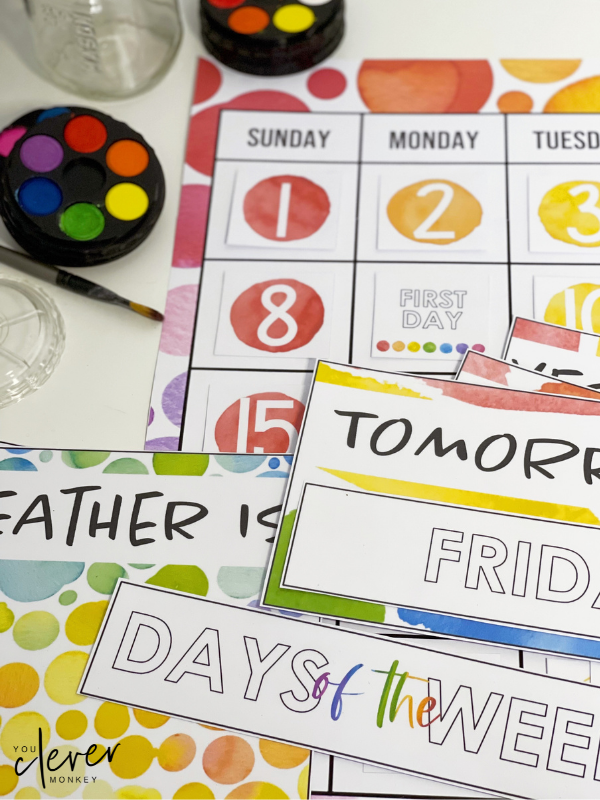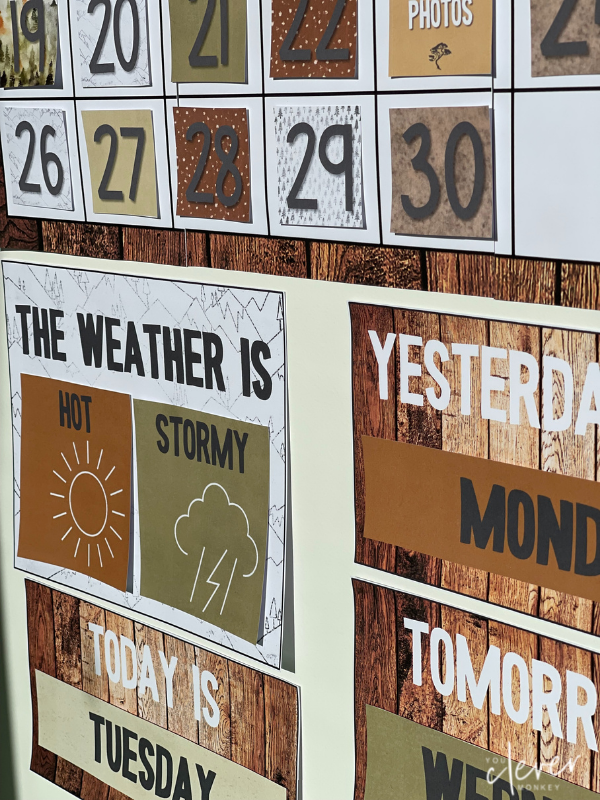Why you should still have a calendar in class along with some helpful teaching ideas to use it with the greatest impact.
A large classroom calendar has been a staple in elementary school classrooms for many years and still are an important tool and not just for satisfying your math curriculum's requirements.
With not enough time in our school days to cover everything, making every minute count is crucial. You can easily incorporate some valuable maths instruction as part of your morning routine using a large classroom calendar.
There are so many ways to utilise a calendar in class that can help your children learn different concepts.
Using one daily at the start of the school year can help you establish routine and expectations while such routine provides time to practice and reinforce key math concepts. It can also provide you with informal assessment data about your student's understanding too.
For our youngest children, using a classroom calendar provides them with a real life example of number and sequencing. They exposed to the days of the week, months of the year and ordinal numbers.
Being able to recognise days, seasons and days as well as describing the duration of events are all part of the Australian Curriculum descriptors for Measurement and Geometry.
A few quick questions each morning can get your class thinking like mathematicians. your questions might start out simply as they learn to navigate your calendar -
'What month is it?'
'What day will it be tomorrow?'
To more complex questions,
'What date was last Tuesday?'
'What day of the week does the 20th fall on this month?'
You can also use parts of your calendar for whole class sorting activities whether it be the days of the week or months of the year.
Mix up the order and then give a card to each child in your class and have them stand up in front of the group then ask your remaining children to take it in turns to give one direction at a time to the standing group until they have correctly ordered the days of the week or months.
You can repeat this task seeing if they can reduce the amount of directions they have to give to get the sequence right. It's perfect for working on prepositions as well -
'Can Jack move to the right of Stella?'
'Imogen needs to move to the start of the line next to the door'
You can also use your classroom calendar to mark key events and celebrate important milestones like birthdays.
Making dates like this stand out on your calendar can build anticipation but also works to create a sense of belonging in class as everyone can countdown to these key dates.
In older classrooms, you can again ask questions of your class when setting up your calendar at the start of the new month -
'If Harper's birthday is in three weeks and two days from now, what date will that be?'
It can also help to reduce anxiety in some children as they can see what's coming up.
Your classroom calendar can also include displays for the days of the week, seasons or weather.
Your students can physically see the passing of time as we move from one month to the next - something that cannot be undervalued when teaching such an abstract concept as time.
Visuals are important in elementary classrooms and having a calendar display in class provides your children with a word wall for many words they might like to use in their writing but cannot yet spell independently.







